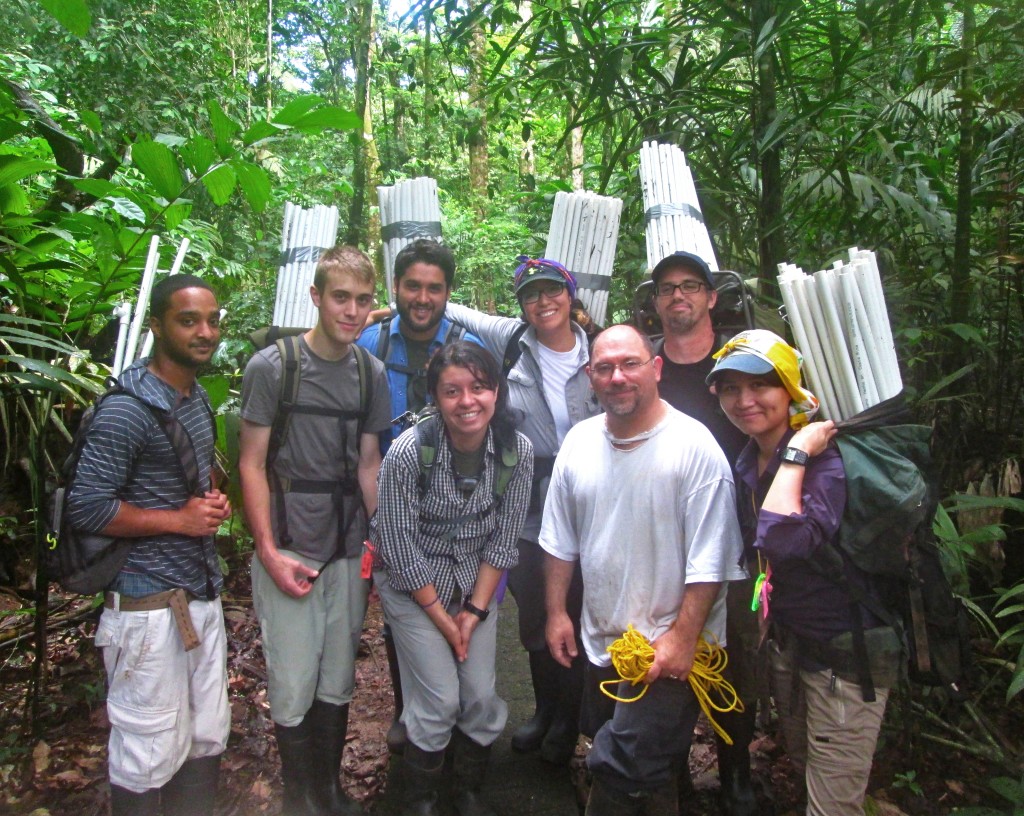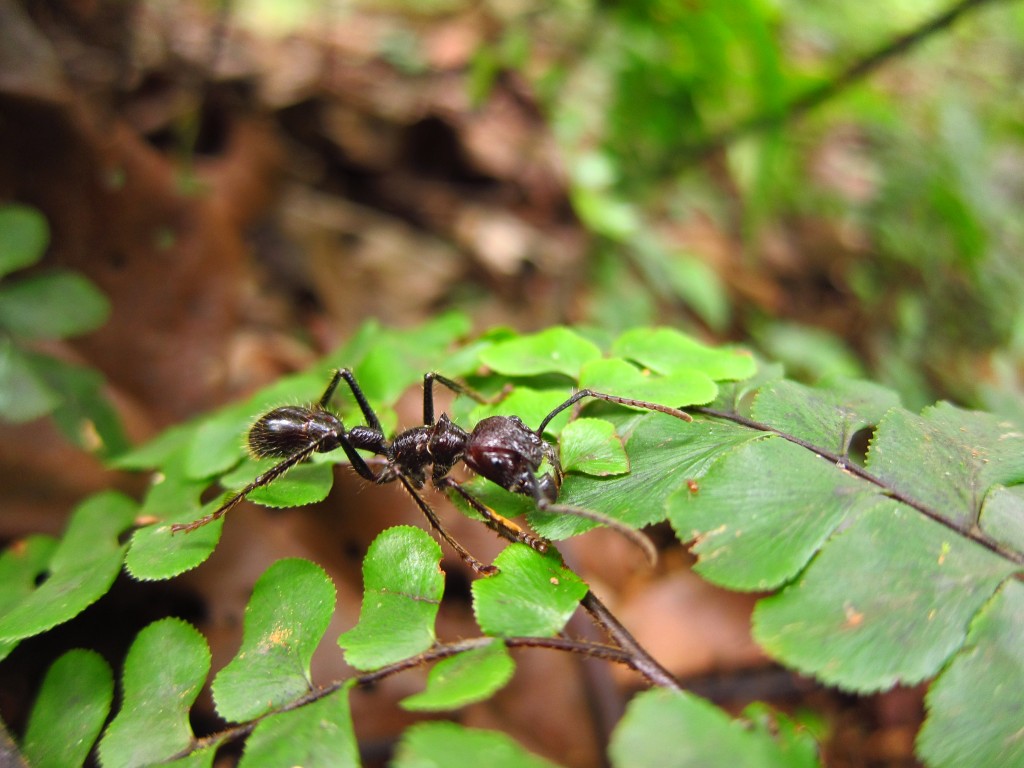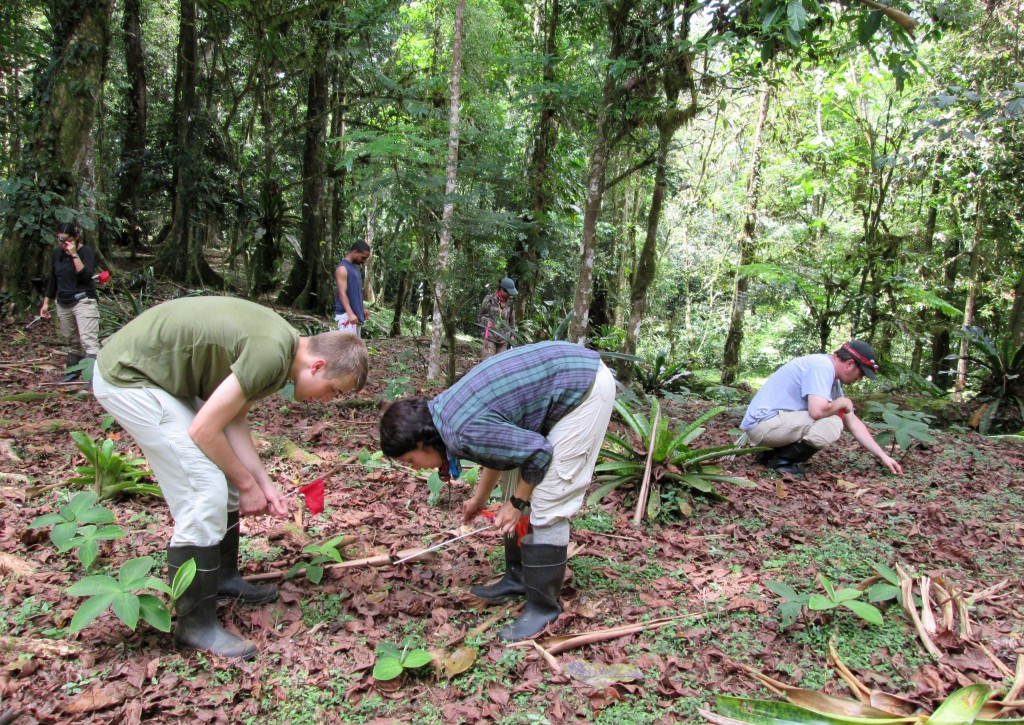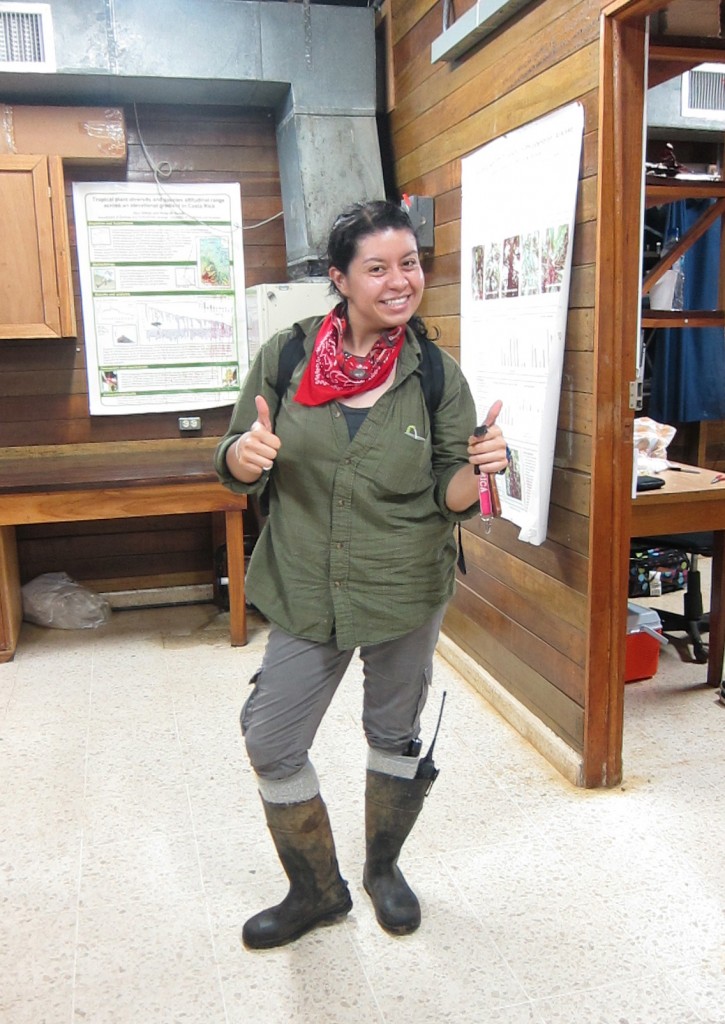Whether contending with torrential rains, viscous mud or venomous snakes, all under the din of screeching monkeys and the clatter of exotically feathered fliers, things in a densely vegetated rainforest can seem larger than life. But it was a wee creature that captured Erica Parra’s imagination.
“Once you really stop and observe them you realize they are not just ants but they are individuals who are working together to make their colonies function efficiently. And not only that, but they each have their own personality and mission, which in turn helps the environment that surrounds them,” Parra asserted.
The California State University, Dominguez Hills senior, who is majoring in biology with an emphasis in ecology, has been working to shed light on a particular species of ground-dwelling ants–both figuratively and literally.

As part of an international research project led by associate professor of biology Terry McGlynn, Parra spent her summer in the field manipulating the environment to see how variations in sunlight affect colonies of litter-nesting ants that live among the leaf litter on the floor of the rainforest in Puerto Viejo de Sarapiqui, Costa Rica.
“Understanding how changes to their environment–as minimal as it might be to us–effects these social insects. Yes, a degree change to us is not much, but to these ants a single degree can be the cause of their death,” said Parra. “This work is also important because looking at how things work on a smaller scale helps us to understand diversity on a larger scale.”
Beginning in May and continuing through August, Parra and alumnus Jaime Perez (Class of ’13, B.S., biology) carried out lab work at the Organization for Tropical Studies’ La Selva Biological Station. Participating with the duo for the first three weeks were Omar Nasir, Ashley Aranda, and Jeremy Emerson, who are seniors majoring in biology, and Loan Anh Do, a biology grad student who was working on a separate project. Also working at the site was LAUSD middle school science teacher Ulises Dumas, who was part of the CSU Dominguez Hills Noyce Master Teacher Fellows program’s Research Experiences For Teachers, and community college student Dylan Levar.
The students constructed and erected 80 one-meter mesh shades, with treatments that varied the spatial complexity of light on the ground. After six weeks, Parra and Perez sifted and analyzed the leaf litter that was collected from beneath the screens.
“We separate the ants from the non-ants. We also have to identify every single ant we collect, because we’re interested in the diversity and diversity changes under the shades.” Parra continued, “It’s really hard to identify all the different litter-nesting ant species from one another since they all look very similar to the untrained eye, at least for us students who don’t know as much as Terry.”

While it may be true that the students are still mastering skills that are used in their field, McGlynn said Parra’s contributions to his lab, as well as research papers authored by faculty and graduate student researchers, have been significant. However, much of the work she has produced has been for her own research projects.
McGlynn explained that Parra has spent two field seasons at the research station in Costa Rica conducting detailed experiments on two species of ants; the feeding ecology of the bullet ant and the thermal biology of the litter-nesting ant community. For submission to a scholarly journal, Parra is currently working on a manuscript that stems from her first summer research project in 2012, which was focused on the bullet ant. She will use it as a model species to discover the mechanism that makes the arboreal ant a dominant species.
“These projects not only required independent judgment and biological insights, but also hard work in the field and the lab,” McGlynn commented of Parra’s skills. “And she generated some awesome data.”
In addition to collaboration with fellow students and faculty on such field projects, it was interaction with other scientific experts that Parra pointed to for widening her perspective of the field.
“I learned so much. Because you’re in a field station and you’re not just there with the group of people you go with, you meet so many other researchers and you get to learn from them. There’s ornithologists, entomologists, botanists and herpetologists,” Parra noted. “It is such an open and welcoming community. You can talk to anyone and they’ll tell you about their research and will even invite you out to their field site and show you what it is they do.”

However, Parra’s interactions while in Costa Rica weren’t limited to the field and lab. In June, she attended a four-day conference of the Association for Tropical and Biology and Conservation and the Organization for Tropical Studies. There, McGlynn presented on the topic, “Do Fences Make Better Neighbors?: How large vertebrates affect the biodiversity of litter dwelling arthropods,” which he co-authored with CSU Dominguez Hills alumnus Peter Tellez (Class of ’13, B.S., biology), who is now in the ecology and evolutionary biology Ph.D. program at Tulane University.
Parra recognized the benefits of being able to attend the conference, saying, “We got to go to all these talks and we were exposed to so many other researchers, not just researchers from Costa Rica but researchers from other tropical areas. It was so exciting.”
While the research has been enlightening and the interactions enriching, the experience has also helped to demystify graduate studies for the first-generation college student.
“I had no idea what it was like to go into a master’s program and work with a PI (principal investigator) or a Ph.D. student. … But now, Terry is treating us like we are master’s students or Ph.D. students. He is letting me see that this is the relationship you have with your PI; this is how it works. Being involved in these research projects is giving me an idea of what it’s going to be like in a graduate program and to understand the path to get into a Ph.D. program,” Parra remarked. “It’s also good because, if I wouldn’t have liked fieldwork, I would’ve known by now that biological research is not for me. But I’m ecstatic.”
A high percentage of students have parlayed their fieldwork experience into other research opportunities. McGlynn–who since his years as a graduate student and throughout his 15-year teaching career has involved about 100 students in his research–noted this is especially remarkable because, in many cases, students, such as Parra, hadn’t previously known they liked research because “they never had the chance.”

Funding plays a major role in providing many students with research opportunities.
Parra’s Costa Rica research opportunities were funded in part by the Louis Stokes Alliance for Minority Participation (LSAMP) program, which is a joint project between the National Science Foundation and the CSU system to increase the number of individuals who have faced social, educational or economic barriers to careers in science, technology, engineering and mathematics, (STEM) disciplines.
Beginning in January 2014 and continuing through August, Parra will be participating in a 28-week climate change research project in Australia, funded by a grant from the International Research Experiences for Students (IRES) program.
To read the full story on the NSF grant that will send students to Australia, click here.
Parra, who initially came to CSU Dominguez Hills as a cell and molecular science major, noted that while it was a general education course in biology that captured her interest, it was research opportunities that left an indelible mark on her.
“I’m inspired,” she said. “I love fieldwork and I can’t wait to get into my Ph.D. program and start on my new work.”